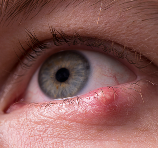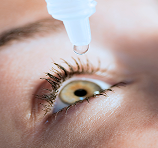


How Do You Get a Stye?
Styes are caused by bacteria from your skin (usually staphylococci bacteria) that get into and irritate the oil glands in the eyelids. These bacteria, which normally exist harmlessly on the skin of the eye, can sometimes get trapped along with dead skin cells on the edge of the eyelid. The result is a swollen, red, and painful bump that can develop over the course of a few days.
Certain things can increase your risk of developing styes. Touching mucus from the nose, for example, and then touching the eye can cause the spread of staphylococcal bacteria to the eyelid. Touching your eyes without washing your hands, not disinfecting your contact lenses, and using old cosmetics can transfer bacteria to your eye.
In addition, individuals with blepharitis, which is chronic redness on the edge of the eyelid, are more likely to get styes.
How Long Does a Stye Last?
Most styes will go away after a week or so without any treatment. Irritating the eye can make a stye last longer. You’ll want to be careful to clean any discharge from your stye so that the infection is less likely to spread to your other eye or other areas. Recurring styes may indicate that eyelids need to be cleaned more often.
You can easily and gently clean the area around your eyes and eyelids with Stye™ Eyelid Cleansing Wipes. They help remove dirt, oil, and other debris that can cause inflammation or discomfort. No rinsing is needed, so you can bring them with you and quickly clean your eyes any time of day.
Regularly washing away skin-dwelling bacteria from the eyelid will decrease the risk of eyelash follicles becoming infected.
To learn how to get rid of styes, read “Treatment Options for Styes.”
References





